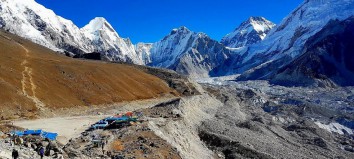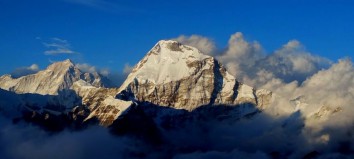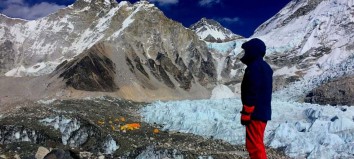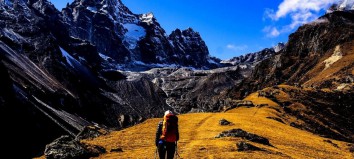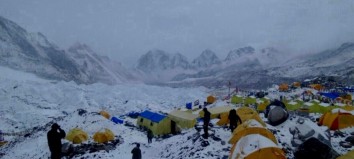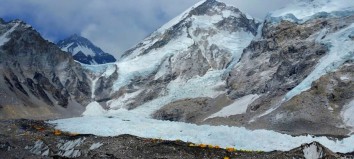Exploring the Origin of the Sherpa People in Nepal | A Deep Dive into History
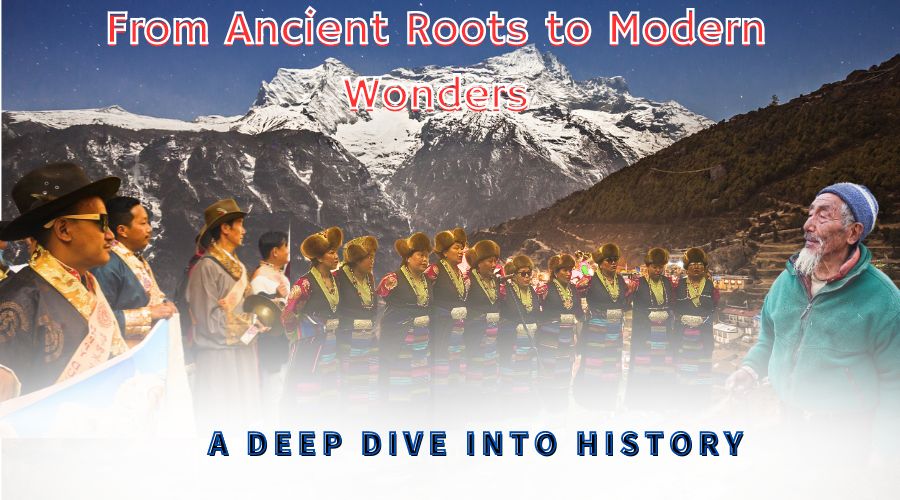
Nestled within the towering peaks of the Himalayas lies the homeland of the Sherpa people, renowned for their expertise in mountaineering, their rich cultural heritage, and their remarkable resilience in the face of extreme environments. But who are the Sherpas, and what is the story behind their remarkable journey through history?
The Sherpa people are an ethnic group native to the mountainous regions of Nepal, particularly in the Solu-Khumbu district in the northeastern part of the country. They are best known for their role as guides and porters for mountaineering expeditions in the Himalayas, a tradition that has earned them global recognition and admiration. However, their origins and the evolution of their unique culture are shrouded in a tapestry of history and legend.
To understand the origins of the Sherpa people, we must delve deep into the annals of history. The term "Sherpa" itself is derived from the Tibetan words "shar" (east) and "pa" (people), signifying their eastern Tibetan ancestry. It is believed that the Sherpas migrated from the Kham region of eastern Tibet to Nepal several centuries ago, driven by various factors such as trade, cultural exchange, and possibly conflict.
Historical records suggest that the Sherpas first settled in the Solu-Khumbu region of Nepal around the 16th century, establishing their communities in the high-altitude valleys beneath the towering peaks of Everest, Lhotse, and Makalu. These valleys provided fertile land for agriculture and grazing, as well as strategic locations for trade routes connecting Tibet with the lowlands of Nepal and India.
One of the defining moments in Sherpa history came with the arrival of Buddhism in the region. Tibetan Buddhism, with its emphasis on compassion, community, and spiritual enlightenment, deeply influenced Sherpa culture and way of life. Monasteries such as Tengboche and Thame became centers of religious and cultural activities, fostering a strong sense of identity and unity among the Sherpa people.
 The Sherpas' intimate relationship with the mountains is perhaps their most enduring legacy. For generations, they have honed their skills in navigating the treacherous terrain of the Himalayas, serving as guides, porters, and companions to explorers and adventurers from around the world. Their knowledge of the mountains, acquired through centuries of experience, is unparalleled, making them indispensable partners in mountaineering expeditions.
The Sherpas' intimate relationship with the mountains is perhaps their most enduring legacy. For generations, they have honed their skills in navigating the treacherous terrain of the Himalayas, serving as guides, porters, and companions to explorers and adventurers from around the world. Their knowledge of the mountains, acquired through centuries of experience, is unparalleled, making them indispensable partners in mountaineering expeditions.
In 1953, the world took notice of the Sherpas when Sir Edmund Hillary and Tenzing Norgay reached the summit of Mount Everest, the highest peak on Earth. Tenzing Norgay, a Sherpa, became an instant legend, symbolizing the Sherpas' indomitable spirit and their crucial role in Himalayan exploration. Since then, Sherpas have continued to play a vital role in the mountaineering industry, guiding countless climbers to the summits of the world's highest peaks.
But life in the Himalayas has never been easy. The Sherpas face numerous challenges, from harsh climatic conditions to socio-economic hardships. In recent years, issues such as climate change, environmental degradation, and the commercialization of mountaineering have posed new threats to their way of life. Yet, the Sherpas persevere, drawing strength from their deep-rooted cultural traditions and close-knit communities.
 Today, the Sherpa people continue to preserve and celebrate their rich heritage through traditional practices such as Sherpa dance, music, and religious festivals like Losar (Tibetan New Year) and Dumje (Sherpa harvest festival). Efforts are also underway to promote education, healthcare, and sustainable development in Sherpa communities, ensuring a brighter future for generations to come.
Today, the Sherpa people continue to preserve and celebrate their rich heritage through traditional practices such as Sherpa dance, music, and religious festivals like Losar (Tibetan New Year) and Dumje (Sherpa harvest festival). Efforts are also underway to promote education, healthcare, and sustainable development in Sherpa communities, ensuring a brighter future for generations to come.
In unveiling the fascinating origins of the Sherpa people in Nepal, we not only uncover a captivating tale of migration, adaptation, and resilience but also gain a deeper appreciation for the profound bond between humanity and the majestic Himalayan landscape. The Sherpas stand as a testament to the human spirit's capacity to thrive amidst adversity, inspiring awe and admiration in all who encounter their remarkable story.
